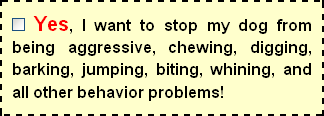
Pronunciation
Boxer
Description
The Boxer's body is compact and powerful and the shiny, close-fitting coat comes in fawn, brindle, white and various shades of red, with white markings. White Boxers cannot be registered with some Kennel Clubs. The tail is usually docked. Ear cropping is optional. (Docking and cropping is illegal in some countries.) Its head should be in proportion to its body, lean and unwrinkled. Its lower jaw extends beyond its upper one, curving upward. Neither teeth nor tongue are to show when the mouth is closed. The nose is large and black with very open nostrils. Eyes dark. The neck should be round, strong, and muscular, without dewlap. The body should be square. The tail is carried high. Its front legs should be straight and parallel.
Temperament
The Boxer is happy, high-spirited, playful, curious and energetic. Highly intelligent, eager and quick to learn, but can be stubborn and sneaky. The Boxer is a good dog for competitive obedience. Constantly on the move, bonding very closely with the family. Loyal and affectionate, Boxers are known for the way they get along so well with children. A well brought-up and properly socialized Boxer will also get along with his own kind and other household pets. However one Boxer owner reported; their Boxer is best friends with their many barn cats and second dog, but will chase and eat their ducks and other farm birds. The female boxer will often get into fights with other female dogs, trying to display her dominance. If one owns a female boxer and another female dog, they will get along and even play most of the time, however they will most likely fight from time to time. It has been said that the name Boxer came from the way the Boxer likes to use is front paws for just about everything. If you have ever watched a Boxer go about his business you may have noticed the way he paws at his toys, food bowl and you for that matter, in a very playful cat-like way. Some Boxers have been known to paw at their food or water bowl if they are empty. Playfully barking, pawing and playing with the bowl, flipping it upside-down and putting their front paws on the top of the bowl, sliding it around the house barking and whining until someone fills it for them. It looks like a silly game, but the Boxer knows what he is trying to tell you, he's hungry! While participating the sport of schutzhund, Boxers are known to jump up and use their front paws as if they are boxing. They are very clownish and playful and have been known to grab and carry ANYTHING around including your knickknacks if he thinks he can get away with it. The Boxer's nature is to protect you, your family, and your home. Known visitors will be welcomed boisterously. They are always keen to work and play. Boxers need lots of human companionship. They can be rather boisterous and even in old age are still extremely athletic. Teach the Boxer not to be boisterous and especially not to jump up at people. Boxers LOVE to jump. This breed is noted for courage and makes great guard dogs. Boxers have a wide use in military and police work. Training should start young and be firm and consistent. This breed requires a dominant owner. An excellent watchdog, the Boxer will restrain an intruder in the same way a Bulldog does.
Height, Weight
Height: Dogs 22-25 inches (56-63 cm.) Bitches 21-24 inches (53-61 cm)
Weight: Dog 60-70 pounds (27-32 kg.) Bitches 53-65 pounds (24-29 kg.)
Health Problems
Some major concerns are cardiomyopathy and other heart problems, sub-aortic stenosis, and thyroid. Can be prone to skin allergies. Sometimes prone to epilepsy and hip dysplasia. From age eight on they are more likely to get tumors than other breeds. Tendency for allergies. These dogs may drool and snore. May have excessive flatulence. Some white Boxers are prone to deafness.
Living Conditions
Boxers will do okay in an apartment if sufficiently exercised. They are fairly active indoors and do best with at least an average-sized yard. Boxers do best in temperate climates as the breed can chill easily in cold weather and have trouble cooling off in very hot weather.
Exercise
An active, athletic breed, Boxers need daily work or exercise, as well as a long brisk, daily walk. They also enjoy fetching a ball or other sessions of play.
Life Expectancy
About 11-14 years
Litter Size
2 - 10 puppies - Average 6
Grooming
The Boxer's smooth, short-haired coat is easy to groom. Brush with a firm bristle brush, and bathe only when necessary, for it removes the natural oils from the skin. Boxers are very clean and groom themselves like cats. This breed is an average shedder.
Origin
The Boxer's ancestors were two German mastiff type dogs, the Bullenbeiszer and the Barenbeiszer. They were later crossed with the powerful ancestors of the Mastiff and Bulldog. Early on, these dogs were prized for hunting, bull baiting, and for pulling carts. A bit farther down the family tree, Boxer ancestors became cattle dogs, and were used to round up livestock. They were also popular circus and theater dogs because they learned tricks so easily. Breeding was rather indiscriminate until the first Boxer studbook was started in 1904, stabilizing the breed standard. In spite of its German origins, "Boxer" is an English name that suitably describes the dog's punchy fighting style. Though early Boxers may have been quite ferocious, the breed today is a very gentle, loving family companion. Some of the Boxer's talents are watchdogging, guarding, police work, military work, search & rescue, competitive obedience, schutzhund and performing tricks. Breeders are breeding two types of Boxers, the German Boxer and the American Boxer. The German Boxers have bigger heads and are generally more muscular than American Boxers.
Group
Mastiff, AKC Working





 Your boxer dog communication doesn't include the ability to speak English. Take the word "no," for example. Does your dog speak English? Not understand English. Does she speak it? What's meaningful to her is your tone of voice, not the word itself. Now let's think about that - we're taking up excess time trying to teach our dog a word she'll never speak and that probably doesn't mean much to her anyway. Sure, it's meaningful to us, but that's only one side of the equation. What about something that's meaningful to both human and dog?
Your boxer dog communication doesn't include the ability to speak English. Take the word "no," for example. Does your dog speak English? Not understand English. Does she speak it? What's meaningful to her is your tone of voice, not the word itself. Now let's think about that - we're taking up excess time trying to teach our dog a word she'll never speak and that probably doesn't mean much to her anyway. Sure, it's meaningful to us, but that's only one side of the equation. What about something that's meaningful to both human and dog?
